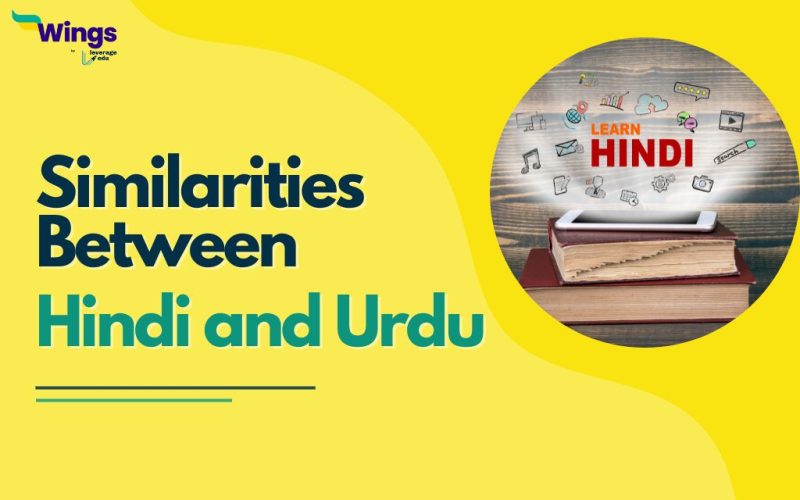Originating in the womb of the Indian subcontinent, Hindi and Urdu are descendants of an array of languages such as Persian, Arabic, Sanskrit, and Prakrit. Not surprisingly enough, both share vocabulary and have many grammatical similarities as they have been derived from the amalgamation of Persian and Arabic with the local dialects of the Northern part of pre-independence India. Owing to the shared history and almost similar pronunciations, the contemporary language of Hindi speaking population of India is often termed ‘Hindustani’. Continue reading to find out about the similarities between Hindi and Urdu.
After the independence of India and Pakistan, Hindi and Urdu have become the official languages of the former and Urdu has been adopted as the national language of the latter. At present, 71.29 million people in India and 89.7 million people globally use Urdu as their mother tongue. Whereas, 585.2 million people across the world use Hindi as their mother tongue.
Hindi v/s Urdu
- Hindi and Urdu are closely related languages that emerged in the Northern part of the Indian subcontinent. Both languages evolved during the Mughal regime in the subcontinent. Both Hindi and Urdu are heavily influenced by Persian. Urdu and contemporary Hindi language is a combination of Persian and ‘Old Hindi’, which was spoken in Delhi.
- Both Hindi and Urdu have Indo-Aryan dialects as they are descendants of the medieval language of Indo-Aryans known as Śauraseni.
- Both Hindi and Urdu are infused with Persian, Arabic, Prakrit, and Sanskrit words. Owing to the overlapping of vocabulary, the North Indian population is unable to differentiate the use of Hindi and Urdu words in the ‘Hindustani’ language, the language of North India.
- Hindi and Urdu are very similar in pronunciation and share a rich literary tradition.
Also Read: Checkout These Popular Hindi Courses
Hindi and Urdu Script
Hindi and Urdu are written in the same script, which is Devanagari. However, Urdu also uses the Nastaliq script, which is a modified version of the Persian script.
Similarities
Both Urdu and Hindi can be written in Devnagari Script. Devanagari is a syllabic script that is used to write several Indian languages, including Hindi, Marathi, and Nepali. Even though the Devanagari script is not exclusive to Hindi but it is exclusively written in this script only.
Differences
In Hindi, the Devanagari script is used to write the language in its native form, with minimal borrowing from other languages. Hindi uses a simplified version of the Devanagari script, with fewer characters than other languages that use the script. The script is generally more phonetic, with each character representing a specific sound.
Urdu, on the other hand, uses the Nastaliq script, which is a modified version of the Persian script. The Nastaliq script is a cursive script that is written from right to left, and it includes a number of additional characters that are not present in the Devanagari script. Urdu also borrows heavily from Arabic and Persian, and as a result, many of its words are written in a modified form of the Arabic script.
Hindi and Urdu Pronunciation
Hindi and Urdu are closely related languages and share many similarities in pronunciation. However, there are markable differences between the two:
Similarities
Hindi are Urdu have very similar pronunciations as they share vocabulary and basic vowel sounds. As both languages are mutually intelligible when it comes to pronunciation, speakers of one language can generally understand and interpret the other with ease. Both languages have a common set of basic vowels such as long and short versions of ‘a’, ‘e’, ‘i’, ‘o’, and ‘u’.
Differences
Even though some vowels have some pronunciation, certain vowel sounds differ in both languages. For example, there is no equivalent of “ع”, a long ‘a’, in Hindi. Likewise, “ف” is pronounced as ‘Ph’ in Hindi and ‘F’ in Urdu; “غ” is pronounced as ‘Gh’ in Hindi, even though it sounds like ‘R’ in Urdu; and “ز” is spoken as ‘J’ in Hindi and ‘Z’ in Urdu.
Also Read: How to Say Hello in Different Indian Languages?
Hindi and Urdu Vocabulary
Hindi and Urdu have a lot of common vocabulary, owing to their shared history and intimate relationship. However, just like any other language, both have their distinct and distinguishable words.
Similarities
Both languages developed from the Hindustani language and have been influenced by Sanskrit, Persian, Arabic, and English. As a result, many words in Hindi and Urdu are similar or identical, although there are some differences in pronunciation and spelling. Many words are used in both Hindi and Urdu, often with the same meaning. For example, the word for “friend” is “dost” in both Hindi and Urdu, and the word for “love” is “pyaar” in both languages.
In addition, both Hindi and Urdu have borrowed heavily from English in recent years, particularly in the areas of technology, business, and popular culture. As a result, many words in Hindi and Urdu are now borrowed from English, such as “computer,” “internet,” and “television.”
Differences
In general, Hindi tends to use more words of Sanskrit origin, while Urdu uses more words of Persian and Arabic origin. For example, the Hindi word for “water” is “paani,” which comes from Sanskrit, while the Urdu word is “aab,” which comes from Arabic. Similarly, the Hindi word for “mother” is “maa,” which is of Sanskrit origin, while the Urdu word is “maa” or “ammi,” which comes from Persian.
Also Read: The Soulful Allama Iqbal Shayari on Life, Love and Inspiration!
Hindi and Urdu Grammar
Both languages are Indo-Aryan languages and have similar grammatical structures. However, the two languages have certain distinctive features which make them stand apart from each other in the literary world.
Similarities
Both Hindi and Urdu are subject-object-verb (SOV) languages, which means that the subject of a sentence generally comes before the object and the verb. Both languages also have a complex system of verb conjugation, which includes tense, aspect, mood, and voice. Hindi and Urdu verbs are conjugated according to person, number, and gender.
Differences
One of the biggest differences between Hindi and Urdu is their writing system. Hindi uses the Devanagari script, while Urdu uses a modified version of the Persian script called Nastaliq. Despite these differences, the underlying grammar of the two languages is largely the same.
Also Read: PhD in Hindi
FAQs
Ans: Hindi and Urdu have a lot of common vocabulary, owing to their shared history and intimate relationship. Both languages are Indo-Aryan languages and have similar grammatical structures.
Ans: Yes. Similar pronunciations, shared history, and shared vocabulary make it easy for an Urdu-speaking person to understand Hindi.
Ans: Both languages are sister languages as they have descended from many Indo-Aryan languages like Arabic and Persian. Both share vocabulary and have a common basic grammar base.
This was all about similarities between Hindi and Urdu. Stay tuned to Leverage Edu to read about other languages and many interesting blogs.
 One app for all your study abroad needs
One app for all your study abroad needs













